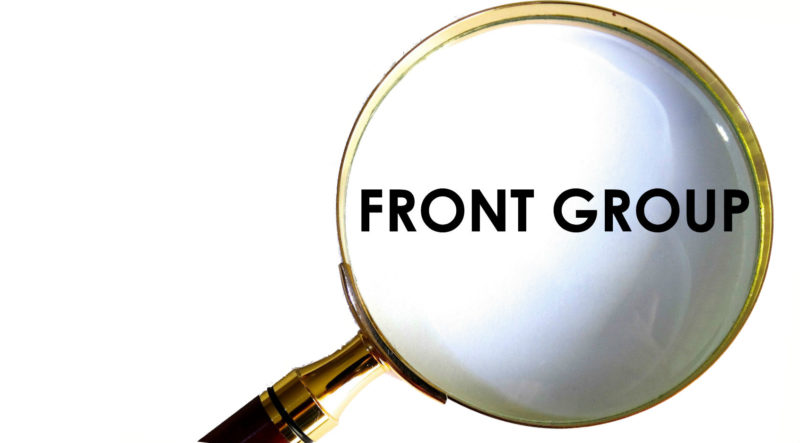Front Group: An organization that purports to be independent voluntary association or charitable organization, but actually serves the interest of the sponsoring party whose identity is often hidden. Certain front groups are seemingly grassroots-based coalitions that are actually funded by an industry trade association or public relations firm.
A week or so ago, the group Citizens For Fire Safety popped up in Olympia opposing the Toxic-Free Kids Act, the bill to phase out the use of toxic Tris flame retardants. And, while their name sounds like they have the best of intentions, it turns out that Citizens For Fire Safety is actually a chemical industry front group with a long track record of lobbying dirty tricks. With the Toxic-Free Kids Act on this year’s legislative agenda in Washington, we’re not surprised they’ve surfaced here.
CFFS is a group funded and run by the makers of toxic flame retardants. It’s no wonder they’re opposed to getting rid of these flame retardants in consumer products!
They’ve spent millions in California and other states advocating against policies to protect kids from toxic flame retardants. Short on proof toxic Tris flame retardants are good for us, the chemical makers have put up smokescreens to protect their profits. And what better way to do this than to pretend they’re something they’re not? That’s what’s happening here in Washington right now.
All of these shenanigans have reminded us that it’s hard sometimes to tell a front group from a legitimate nonprofit. How can the public see through these dirty tricks? We thought we’d put together a handy guide to help you spot the front group so you don’t get tricked!
At first glance, such an organization usually looks like any other nonprofit, and most people don’t have the time to go digging through financial records to find out who’s really behind the group. However, we’ve noticed a few key things you can spot on a group’s website that are pretty good indicators as to if it’s a front group:
1. A nice-sounding name that almost no one could be against. Citizens For Fire Safety is a great example. After all, is anyone against fire safety?
2. Lack of specific information. People are proud to be a part of legitimate nonprofit organizations, and most will have lists of things like staff members, board members, and coalition partners on their website. If a group keeps these things vague, you have to wonder why.
For example, CFFS has no board or staff lists, mentions only a few nonprofit partners, and provides very little information on their programs. There’s a reason. If you do some digging for their tax filings, you’ll see their board is made up of representatives from chemical companies.
3. No obvious way to donate or get involved. If there’s one thing all nonprofits and charities have in common, it’s that we can always use money and people power to keep the doors open or expand our programs. Although CFFS describes itself as a grassroots “organization seeking to educate the public on safe fire practices” it apparently doesn’t want help doing so because there is no request for help anywhere on their website. Odd to say the least.
4. Are they a 501(c)3? The vast majority of charities and nonprofits (like Washington Toxics Coalition!) are 501(c)3, which means they are primarily a charitable organization. CFFS, on the other hand, has a 501(c)6 designation, which means it was created for the benefit of their membership. Though such groups may well engage in some charitable activities, it’s not the main purpose of the organization.
5. What does Google say? If reputable sources say the organization’s a front group and the other tips mentioned here fit, don’t bother puzzling through pages of financial records. You’ve got yourself a front group! In the case of Citizens For Fire Safety, a quick Google search brings up more results denouncing them as a front group on the first page than anything else.
Of course, nonprofits don’t always agree with one another. However, with so much information and misinformation out there, we hope that this list of tips makes it a little bit easier to sort out disagreement among legitimate groups from manufactured controversy!
Image courtesy of flickr user Images_of_Money




